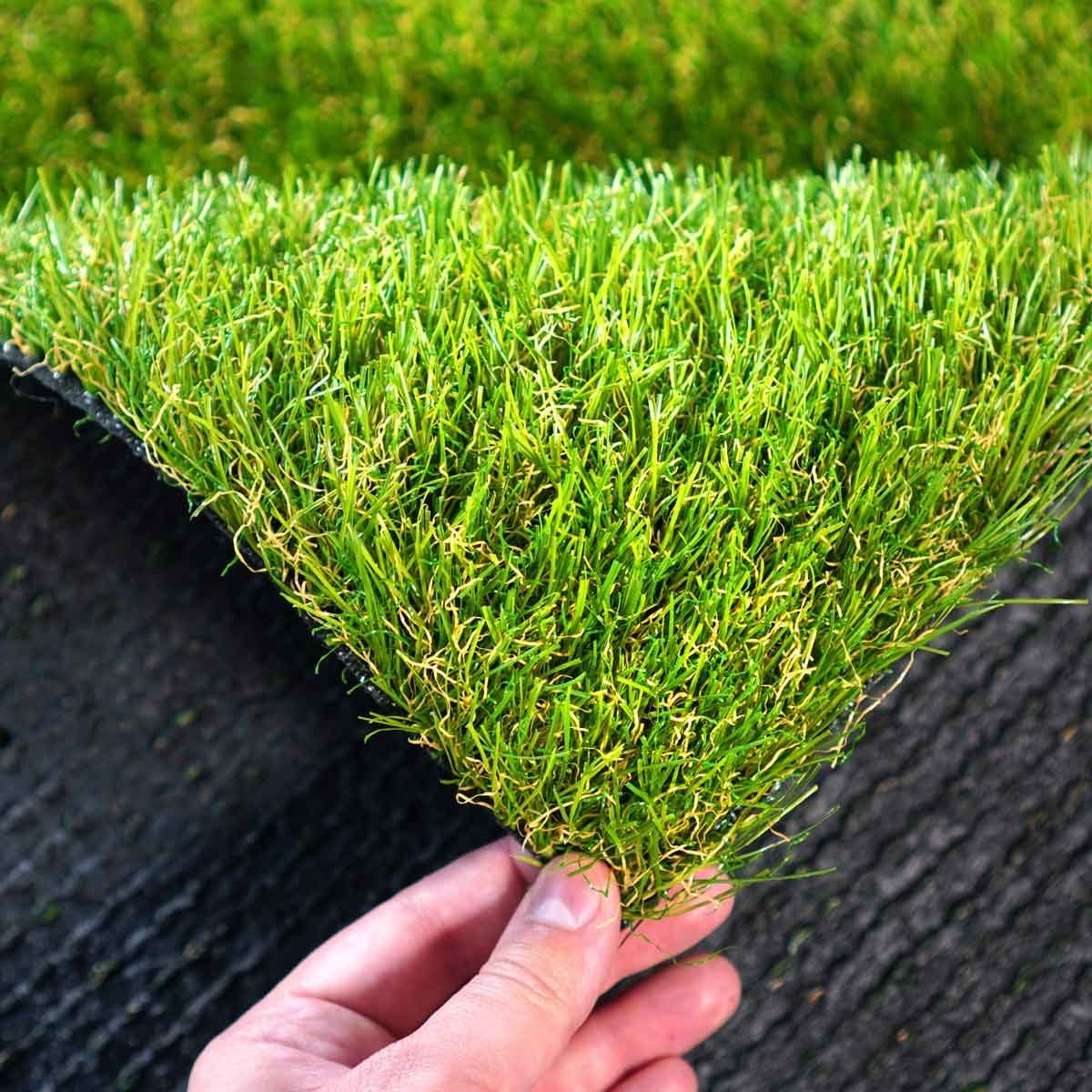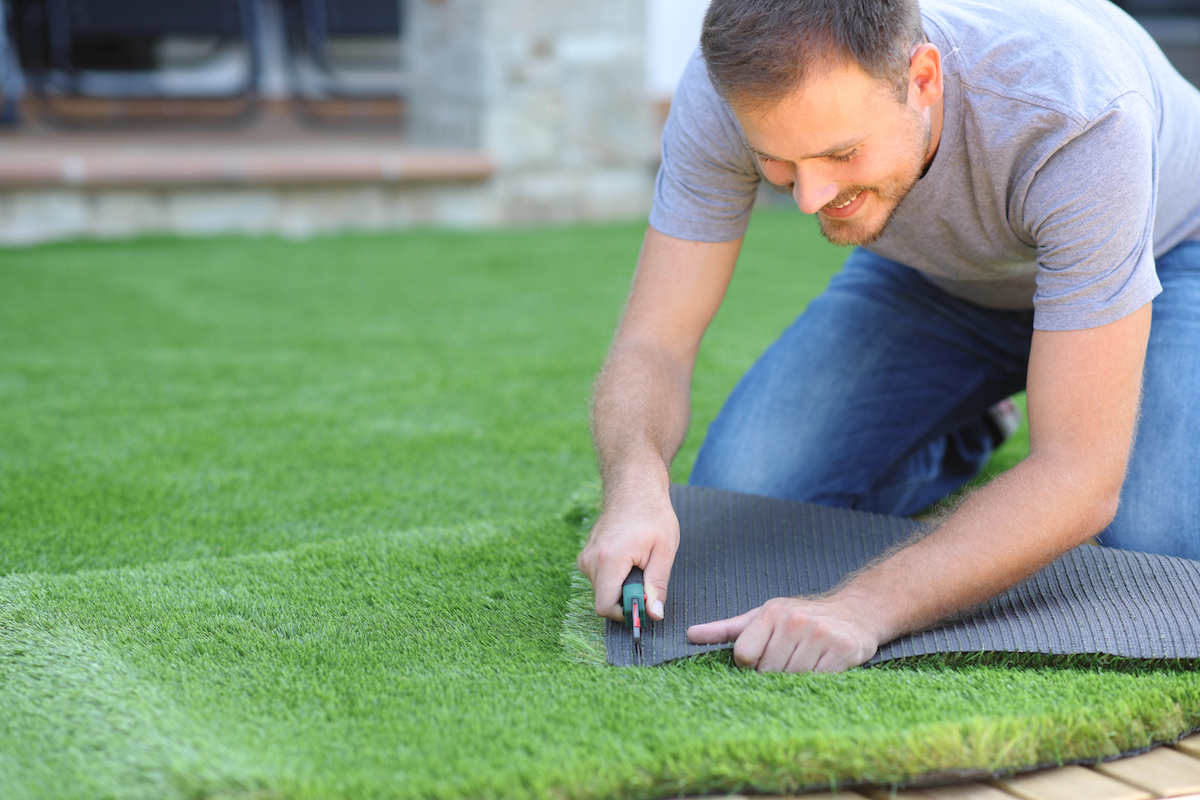Best Phoenix Turf Companies Offering Superior Synthetic Grass Solutions
Best Phoenix Turf Companies Offering Superior Synthetic Grass Solutions
Blog Article
Delve Into the Environmental Benefits of Opting for Synthetic Grass Solutions
The adoption of synthetic lawn services offers a compelling chance to resolve pushing environmental challenges. By significantly decreasing water use and reducing the application of dangerous chemicals, these options not only promote lasting landscaping yet also safeguard local communities.
Water Conservation Conveniences
Among the most substantial advantages of artificial lawn is its capability to preserve water. Standard turf yards call for significant watering, especially in areas susceptible to drought or water limitations. On the other hand, synthetic turf does not need watering, substantially decreasing the overall demand for water resources. This attribute is particularly beneficial in dry regions where water deficiency is a pressing issue.
By removing the demand for routine watering, synthetic grass adds to lasting landscape methods and assists minimize the environmental effect of extreme water consumption. In addition, the preservation of water encompasses the decrease of drainage, which can lead to soil erosion and waterway contamination.
Additionally, the installation of synthetic lawn permits property owners and districts to allot water sources more efficiently, focusing on crucial uses such as drinking water and farming. The shift in the direction of synthetic grass not only advertises responsible water usage yet also aligns with more comprehensive ecological objectives focused on protecting natural resources.
As areas progressively prioritize sustainability, the water preservation benefits of synthetic grass provide a compelling case for its fostering in domestic and commercial landscape design jobs.
Minimized Chemical Use
The shift to synthetic grass dramatically lowers the dependence on chemical treatments typically made use of in all-natural turf upkeep. Standard turf administration normally includes the application of chemicals, herbicides, and fertilizers to promote growth and control parasites. These chemicals can pose dangers to human wellness, local wildlife, and the setting, contributing to dirt and water contamination.
On the other hand, artificial grass eliminates the need for these harmful compounds. As soon as installed, it calls for marginal upkeep, primarily including regular cleansing and infrequent infill replenishment. This decrease in chemical usage not just profits the immediate setting but additionally adds to broader ecological security. By lessening the launch of artificial compounds right into the ecological community, artificial lawn advertises much healthier soil and water supply.
Moreover, the lack of chemical runoff related to man-made lawn installations aids safeguard regional waterways from contamination, supporting aquatic life and preserving biodiversity. Arizona artificial turf. As neighborhoods significantly focus on lasting practices, deciding for synthetic grass presents a practical service that aligns with ecological conservation goals. Via this change, building owners can appreciate rich eco-friendly spaces without compromising environmental health and wellness, leading the way for an extra sustainable future
Reduced Carbon Impact

Additionally, the installation of artificial lawn can cause substantial water preservation. All-natural lawns call for significant quantities of water for irrigation, which not only contributes to the carbon footprint related to water removal and visit their website therapy yet additionally stress local water resources. In comparison, synthetic grass needs very little maintenance, requiring no watering, thus dramatically decreasing water usage and its linked energy expenses.
Additionally, the long life of synthetic grass contributes to its decreased carbon impact. With a lifespan of as much as 15 years or more, the need for constant substitutes is reduced, leading to less waste and lower energy intake in production and getting rid of conventional lawn options. On the whole, synthetic grass provides a sustainable option for ecologically conscious landscape design.
Habitat Preservation
Environment preservation is a crucial factor to consider in the argument over landscaping choices, especially when contrasting man-made lawn to all-natural yard. All-natural yard lawns commonly require substantial maintenance, consisting of the usage of plant foods, chemicals, and herbicides, which can adversely affect local communities. These chemicals can leach right into the soil and waterways, harming indigenous plants and animals and disrupting neighborhood environments.
On the other hand, synthetic grass presents an opportunity to minimize the environmental footprint of landscape design. By choosing artificial lawn, property owners can minimize the interruption of all-natural habitats related to typical lawn treatment methods. Synthetic grass eliminates the requirement for hazardous chemicals, thus shielding close-by wildlife and keeping the integrity of bordering environments. Moreover, the installation of fabricated lawn can lead to the conversion of previous yard locations right into more biodiverse landscapes, such as pollinator yards or native plant locations, which can sustain local wild animals.
Ultimately, the change to artificial turf not only saves water and decreases maintenance efforts but additionally promotes an extra harmonious connection in between human activities and the native environment, advertising habitat preservation while doing so.
Long-Term Sustainability
Long-term sustainability is a vital variable in reviewing the advantages of synthetic grass over typical turf yards. Among the most significant benefits of artificial lawn is its durability; it can last up to 15-20 years with minimal upkeep, whereas natural grass click reference needs regular reseeding and substitute. This long life reduces the requirement for constant resources, such as water, fertilizers, and chemicals, which are vital for maintaining a healthy turf lawn.
Additionally, fabricated turf contributes to a reduction in carbon see post exhausts linked with grass treatment equipment. Typical yards often need gas-powered lawn mowers, leaners, and blowers, all of which add to air contamination. Arizona turf. In contrast, synthetic grass removes the demand for such tools, advertising a cleaner setting
In addition, the production of synthetic lawn significantly uses recycled products, improving its sustainability profile. As suppliers embrace environment-friendly methods, the ecological impact of synthetic grass remains to diminish.

Final Thought
The fostering of man-made grass remedies provides considerable ecological advantages, consisting of substantial water preservation, minimized dependence on dangerous chemicals, and a lower carbon impact. Additionally, synthetic grass aids in preserving all-natural environments by lessening land disturbance and promoting long-lasting sustainability with the use of resilient materials. Collectively, these aspects highlight the potential of synthetic grass to add positively to environmental health and supply a practical alternative to conventional landscape design practices in an increasingly resource-conscious globe.
In comparison, artificial grass does not need watering, substantially lowering the general need for water sources. By minimizing the release of synthetic compounds into the environment, man-made lawn promotes much healthier soil and water systems.
Moreover, the setup of fabricated grass can result in significant water conservation. In comparison, man-made turf needs minimal upkeep, calling for no watering, thus dramatically lowering water use and its linked energy costs.

Report this page